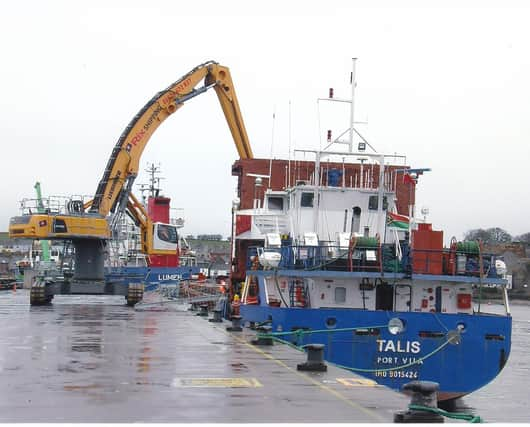Shipping Lines - What's in a name?


Take the Talis, which discharged her cargo at the North Quay in mid-March, as an example of the latter category.
Looking at the vessel no feature stood out design-wise. She looked a run-of-the- mill “bridge dodger”. Blue hull, white accommodation and raised navigating bridge, wheelhouse all having seen a few decades of service around the North Sea and possibly beyond, plus through many of the inland waterways of Europe.
Advertisement
Hide AdAdvertisement
Hide AdHowever, it was her port of registry which gave the game away – Port Vila, the main port of the 80-island group of Vanuatu in the Pacific, lying about 2500km north-east of Sydney.
Originally named New Hebrides, they gained independence in 1980 after 74 years of Franco-British administration. The country’s maritime regulations are based on US law. Head office is in Port Vila, but day-to-day operations are located in New York. Associated business is also conducted by several offices in ports around the world.
The ship was initially named Saar Emden before becoming Rysum prior to completion by the Rosslauer Schiffswerft GmbH, which had its roots stretching back to 1844. It was established by three brothers Saschenberg who expanded their father’s foundry prior to purchasing land on which to build steam engines, etc. In 1866 they founded a shipbuilding facility fronting onto the Elbe, initially repairing vessels. They built dredgers, tugs and fishing craft, becoming what was said to be the largest inland shipyard in Europe.
In 1939 the yard management refused to become involved in wartime shipbuilding and they were withdrawn and put to other employment. From 1945 the Soviet occupiers expropriated the founding family’s assets and demanded DM100m in war reparations to be paid in new ship construction. The sideways launching slipway was rebuilt and extended and a new assembly hall built, together with a training school for employees.
Advertisement
Hide AdAdvertisement
Hide AdThe Saar Emden/Rysum/Talis would appear to be one of the first German-registered ships to be built by the re-constituted Rosslauer shipyard after German re-unification in 1990. At present, the company is engaged in steel fabrication including bridge assembly. The Rosslau Shipbuilding and Shipping Museum stands on the site of the former shipyard and within its displays, conveys the history of shipbuilding and shipping on the Elbe.
After discharging, the Talis sailed in ballast for Ghent in Belgium. In days gone by, with regular trade between the east coast of Scotland and the Low Countries, ports in what are now present-day Belgium and The Netherlands, Montrose merchants would have been noted plying their trade and would have been seen regularly along the quaysides beside the rivers and canals, as well as in the taverns no doubt, conducting their business in a congenial atmosphere.
The phrase “weel kent in Ghent” would almost certainly have applied to such traders who also carried the name of Montrose from the Baltic to the Med and much further afield.